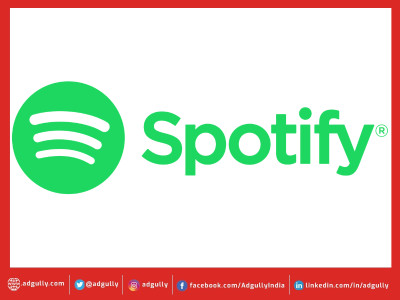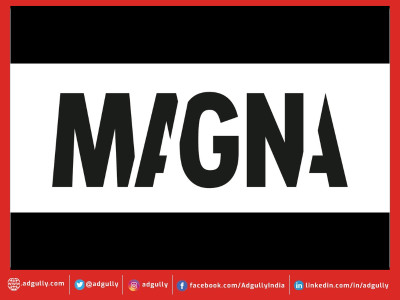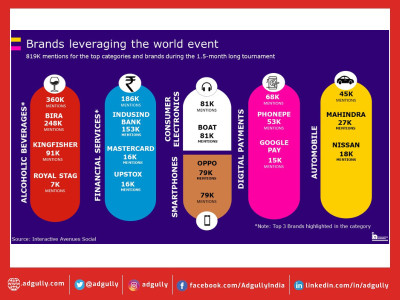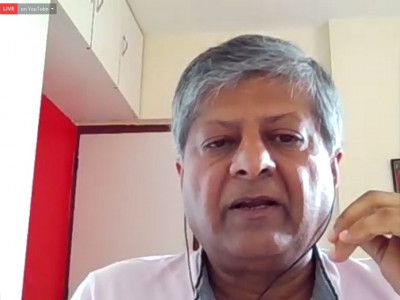IPG Media Lab Outlook 2017 highlights 3 tech trends of consumer behaviour
IPG Media Lab, NY, the creative technology arm of IPG Mediabrands, has launched Outlook 2017, highlighting three defining tech trends of consumer behaviour that all brands should be cognizant of.
Every year, IPG Media Lab rounds up the ideas that animate the industry: the market forces, new technologies, and consumer shifts that are changing the ways media agencies evaluate, buy, and create media.
Outlook 2017 is categorised in three sections – Advanced Interfaces, Global Culture and Augmented Intelligence. It can be summarised that Advanced Interfaces & Global Culture, fueled by the rise of Augmented Intelligence, are shaping the future of brand marketing.
Advanced Interfaces
The smartphone has become the universal product of the 21st century – one day soon, everyone in the world will have access to the real-time information and communication a smartphone affords. But just as importantly, everyone will soon have a high-quality networked camera, a highly-tuned microphone, and a precise record of where they are in the world. These sensors will increasingly be used not just to capture media, but also as their own full-fledged sources of data.
Text has always been the lingua franca of computing: it’s how we create software, and how software has received our inputs about the world – until now. Over the past few years, machine learning has progressed to the point of rendering images and videos to computers as transparently as text has always been: Google can find all your photos that include your pets, or that volcano you toured in Hawaii, and translate street signs in real time when you point your phone at them. And the dual-camera system, which first shipped in the iPhone 7 Plus, can process depth, making it suitable for capturing scenes in 3D space.
And while we’ve been talking to our phones via Siri and Google, for a while now, Amazon has supercharged the use of voice interfaces by placing Alexa outside the context of the phone as an assistant that’s tied to a place, rather than a person. It’s time to stop thinking about cameras and microphones as digital updates to 20th century devices, and start thinking about them as the eyes and ears of our software and services.
We’ve already seen the first company founded on this principle: when they rebranded the company from Snapchat to Snap, CEO Evan Spiegel stressed the point that they were not a social network, but a camera company.
Along with these new types of inputs come entirely new types of media. Virtual reality made waves last year as we saw the launch of major new consumer platforms, while Pokemon Go and Snapchat are preparing consumers for the coming onslaught of augmented reality. While these markets are nascent, they represent two sides of the same coin: virtual reality is the purest media experience we’ve ever created, fully immersing us in the content. And augmented reality will be the inverse: pushing media out to every corner of our physical world. Both are still nascent technologies, but together represent the future of media, and are fertile playgrounds for how to speak to the consumer of the future.
As brands are looking to capitalise on these new interfaces, there is need to start from the data: what information about your consumers would allow you to deliver a more personalised, tailored experience with your product? That customisation will extend beyond the product itself, but it’s important that it begin from a position of improving the experience for the consumer. Once that data strategy is identified, we can partner with the relevant platforms to create experiences that access that data. In some cases, it might make sense for a brand to create its own Advanced Interface if you can authentically create value.
Global Culture
Last year, IPG Media Lab had focused on Appified TV, as well as the seismic shift in media creation, distribution, and monetisation. In 2017, the focus is changing to the globalisation of all culture, enabled by real-time communication, and content designed to cross the borders of regions and platforms. It’s the app-ification of all media that allows for quick adaptation to these new Advanced Interfaces, and these twin engines of platform and content are what will drive the next major shift in media and attention.
Netflix has planted the flag in the ground as the world’s first global TV network, but Amazon, YouTube, Facebook, and Snapchat are hot on their heels. A global audience for these new mega-channels can make Super Bowl numbers look quaint, as new genres such as “eSports” can easily usurp them.
This is possible only because these platforms have created, bought, or nurtured their own original content. And sometimes this content looks very different in form, as platforms like Snapchat, YouTube, and Twitch have developed their own aesthetics. Content on YouTube from Korea is going to share more in common with YouTube content from the US than either does with traditional television from either country.
To play in the world of global culture, brands must first identify the correct approach. If you have (or can create) a viable stable of content, distributing it in an owned channel will always provide the most value in terms of audience attention, flexible targeting, and a feedback loop of data. This will allow you to use content to establish direct, personal relationships with your consumers, in turn providing many of the benefits of a vertically-integrated brand even if some or none of your sales are direct-to-consumer.
Brands for whom a content strategy would be prohibitive or inauthentic should seek out the platforms that are optimised for global scale, and that understand the nuances of marketing to different cultures. In either case, it’s important to eschew the notion that you can deliver a singular experience or message that will resonate globally. While platforms allow for targeting and segmentation to assist with this, and while our own industry has been making great progress with dynamic creative, recent technological breakthroughs are beginning to allow us to deploy far more personalised experiences than before, and at a global scale.
Augmented Intelligence
Both Global Culture and new Advanced Interfaces are underpinned by cloud services and a new generation of machine learning running atop them. This intelligence isn’t transformative, but instead augments our existing capabilities, allowing us to track consumer behaviour across platforms and channels and personalise the experience for them at scale. This dynamic backend will allow brands to quickly synthesise data from new interfaces and platforms, while also developing intimate connections with consumers worldwide.
The first widespread use of basic artificial intelligence for brand/ consumer interaction arrived last year with the rise of chatbots and conversational interfaces. These interfaces will disrupt traditional marketing channels such as paid search and social; Google’s and Facebook’s current ad products are predicated on showing you lists and feeds of content, so we can easily make a few of them sponsored, as well as optimise for organic placements. Market dynamics are driving the internet’s largest ad platforms to move away from this model, instead leveraging AI to provide a single true answer.
Much of the processing of this data will happen in the cloud, but it will come from disparate sources, including the Advanced Interfaces discussed above. We’ll see increasing amounts of contextual data pulled from new kinds of sensors and devices – not interfaces in themselves, but real-time data sources designed to provide context and augment the intelligence of other platforms. In effect, these are specialised devices we’ll deploy to supplement our AI’s knowledge of the world and the people in it. The type of data they’ll generate can be grouped into the private, semi-private, and public realms.
Again, any brand that requests contextual data to supplement their targeting and personalisation must offer a clear value exchange for that data by improving their products or services. It doesn’t have to be value within the same channel or moment, since traditional loyalty is distributed across platforms and retail channels. In fact, bolstering benefits in one channel in order to access data from another may be the most prudent tactic for brands looking to augment their customer intelligence and fortify their relationship with customers.
India Relevance: These trends may be in their infancy today, but Indians are known to leap frog in adoption of technology. The penetration of smartphones and proliferation of screens brings us at the beginning of consumer data explosion – a phenomenon which needs to be understood and leveraged by brands to succeed in the future. Besides a variety to interfaces, there is an overlay of content on scale and all of this can be best understood through augmented analytics.
Advanced Interfaces: Brands are already experimenting with different interfaces in a small way. Touch interfaces at malls and airports create interactions and generate data for marketers in terms of product sampling or lead generation. Voice is another interface for consumer connect and missed call interventions are unique to our part of the world.
Global Culture: Sports and Music followed by Entertainment content are crossing borders to appeal to the Indian consumer – who is progressively becoming a perfect blend of Glocal entity (global and local). So, while platforms of content distribution are already here and they are making investments in local content generation, the affluent consumer’s preferences are at par with that of the global consumer.
Augmented Intelligence: On an enhanced level, we already are working with chatbots and services like Google Voice, which are creating powerful interactions with consumers through simplification and adding value to a consumer’s life. Chatbots will continue to evolve into powerful CRM solutions for brands to build strong, loyal relationships with their consumers.
IPG Media Lab’s partnerships team reviews more than 1,000 new companies each year and meets with over 300, cataloging their strengths and assessing their relevance for our clients. The Lab has a full Creative team developing new technology-focused ideas for brands and taking concepts from prototypes to full-scale executions. The Lab also conducts Research that provides with quantitative results from emerging media. And it offers Strategy and thought leadership to contextualize these developments within the larger technology, media, and marketing landscape. The focus is to use all this knowledge, learning, and experience to solve client briefs.


















Share
Facebook
YouTube
Tweet
Twitter
LinkedIn